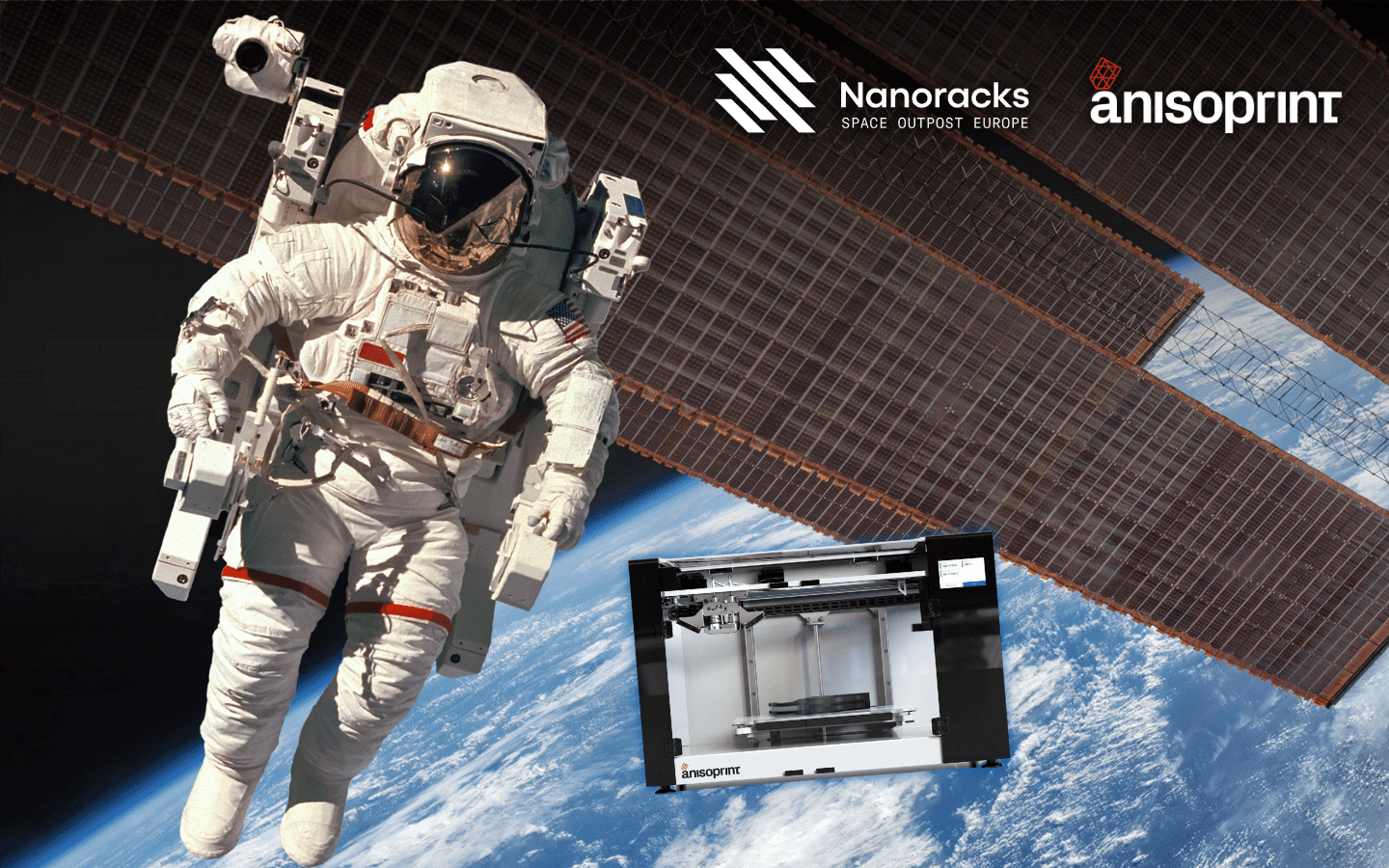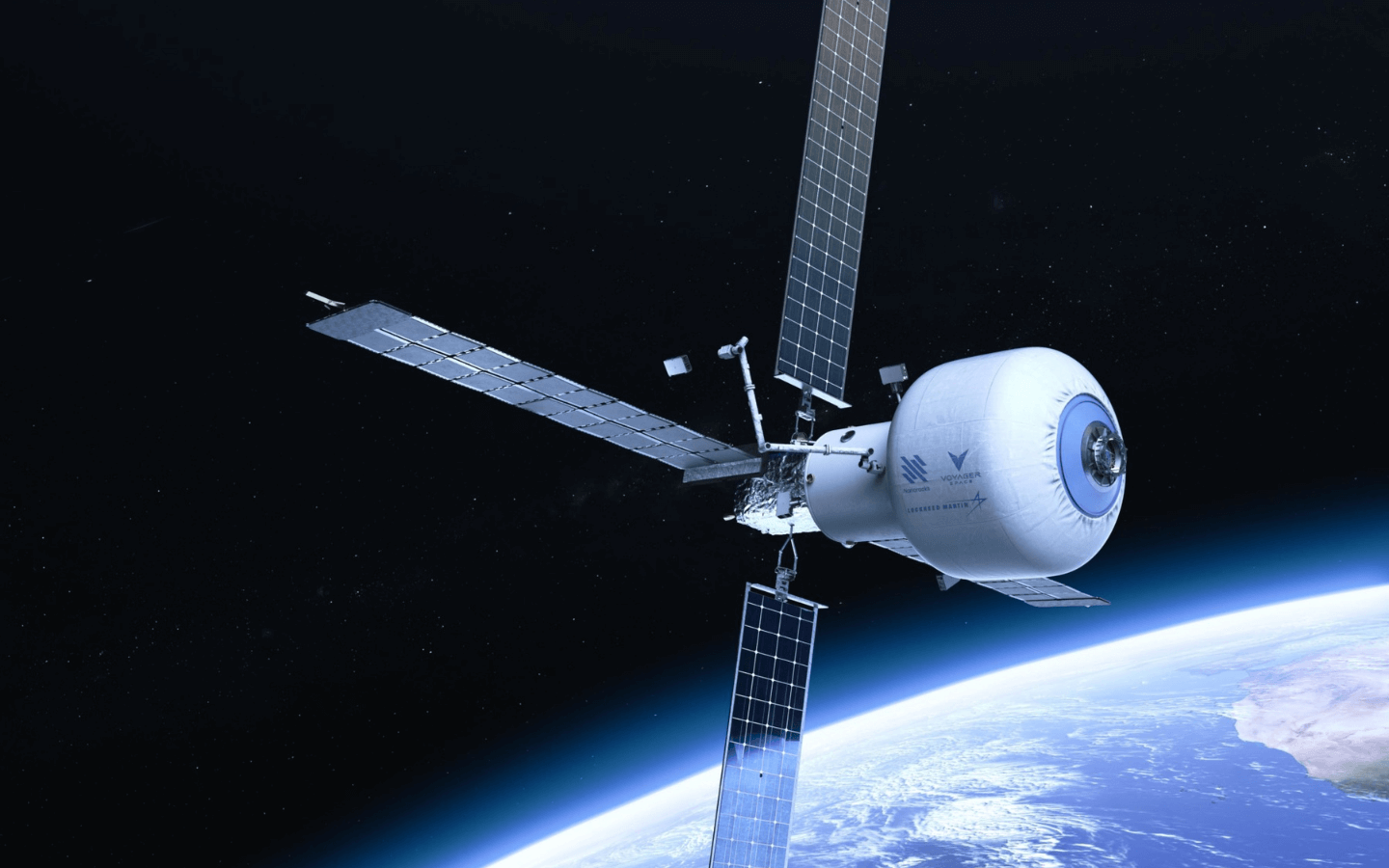Anisoprint, a manufacturer of continuous fiber 3D printing systems, has signed a Memorandum of Understanding (MoU) with Nanoracks Space Outpost Europe that will see it become a part of the Low Earth Orbit (LEO) economy.
Going forwards, the agreement will secure the demonstration and validation of the firm’s continuous fiber co-extrusion (CFC) 3D printing technology in orbit.
“We are excited to join forces with such an experienced and well-respected in source industry partner: adjusting CFC technology for microgravity is the first step, the next is to deploy the technology in orbit together with Nanoracks Space Outpost Europe,” said Dmitrii Prokopiuk, Anisoprint’s Head of Space Development.

CFC 3D printing in space
Anisoprint’s CFC 3D printers, powered by the firm’s proprietary slicing software Aura, are capable of fabricating high-strength reinforced parts. The firm also develops and supplies the fiber-reinforced materials that enable the multitude of applications of its niche technology.
CFC 3D printing facilitates the creation of lattice structures for multi-material optimization and production. Parts produced using the technology are reportedly lighter, stronger, and cheaper than their metal counterparts.
Since Anisoprint was chosen for pre-incubation in the European Space Resources Innovation Center’s (ESRIC) Startup Support Program to adjust its CFC technology for microgravity conditions, the team has made significant progress in expanding its resources network.
The latest milestone in the firm’s journey to sending its technology into LEO is its newly agreed MoU with Nanoraks Space Outpost Europe. Nanoracks has previously partnered with the likes of space 3D printing firm Made in Space (MIS), now owned by Redwire, to 3D print satellites on-demand from the International Space Station (ISS) and other CubeSat deployment platforms.
The company provides a wide range of services on the ISS, and is engaged in the development of orbital infrastructure with the aim of mitigating space debris and providing commercial access to Space.
Through the agreement, Anisoprint’s 3D printing technology will aim to fulfill the demand for on-site production of parts and components for space-faring vehicles, reducing the dependence on expensive and time-consuming supply missions from Earth. Anisoprint’s CFC technology also creates zero waste, meaning the production of parts will be more environmentally efficient and will not contribute to the masses of space debris orbiting the Earth.
With the MoU announced, the company will now turn its attention to working on Nanorack’s R&D team roadmap to meet its customers growing needs in orbit.
“With our plans to develop orbit stations and other space facilities to serve the market needs at the best, it is getting more and more crucial – the role of these innovative in-orbit manufacturing machines,” said Veronica La Regina, Director of Business Development at Nanoracks Europe.
“We are looking forward to experiencing the CFC 3D printing capabilities in our portfolio.”

3D printing on the ISS
Additive manufacturing has been leveraged in a whole host of ways to optimize operations onboard the ISS and to further its research objectives. After receiving a NASA SBRI contract in 2018 to develop its Vulcan hybrid 3D printer, MIS worked with petrochemical firm Braskem to create a 3D printed plastic recycling facility for the ISS to improve the sustainability of the station’s manufacturing capabilities.
Since then, Nano Dimension has begun developing 3D printed RF space systems for the ISS while Redwire-owned TechShot sent its 3D BioFabrication Facility (BFF) to the station, the end goal of which is to eventually 3D print entire organs from scratch.
More recently, a 3D printed UV telescope developed by Italy’s National Institute for Nuclear Physics (INFN) was sent to the ISS to analyze its UV emissions and gain a better understanding of cosmic rays, and astronauts onboard the station are testing 3D printed bandages made of their own cells that could be used to heal flesh wounds in space more effectively.
Subscribe to the 3D Printing Industry newsletter for the latest news in additive manufacturing. You can also stay connected by following us on Twitter and liking us on Facebook.
Looking for a career in additive manufacturing? Visit 3D Printing Jobs for a selection of roles in the industry.
Subscribe to our YouTube channel for the latest 3D printing video shorts, reviews, and webinar replays.
Featured image shows Anisoprint and Nanoracks have signed an MoU for CFC 3D printing in space. Image via Anisoprint.


